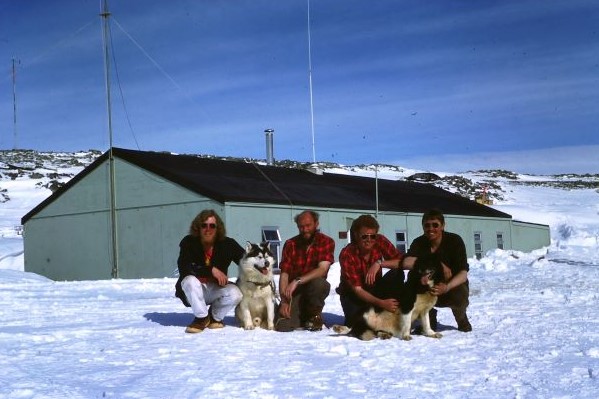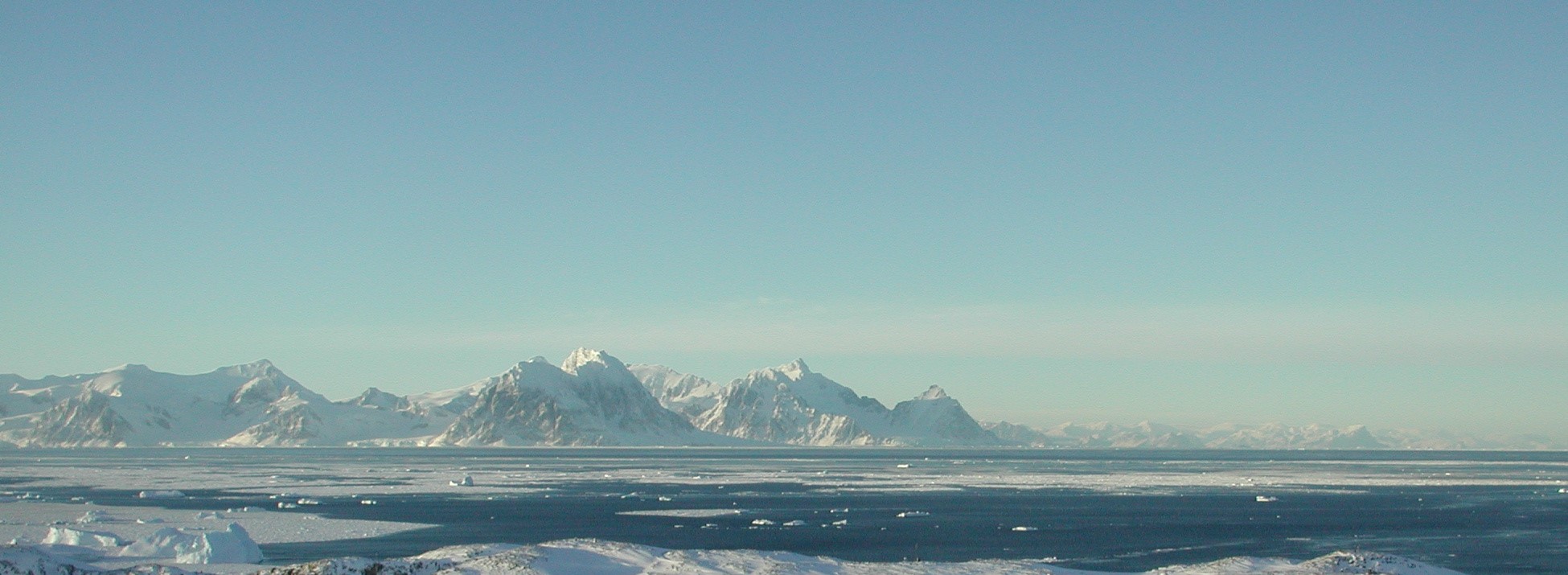The intent at the start of the 1974/75 summer season was to rely on aircraft operations from Doumer Island to provide early access to Adelaide for field parties and essential personnel for the work planned for Rothera. The aim was to have a viable wintering building established there by the end of the summer, together with large stocks of aircraft fuel, so that Rothera would be a viable alternative to the rapidly deteriorating airstrip at Adelaide in the 1976/77 season.
Eventually, twenty-three personnel were airlifted into Adelaide from the Damoy airstrip, together with the 12 tons of airfreight.
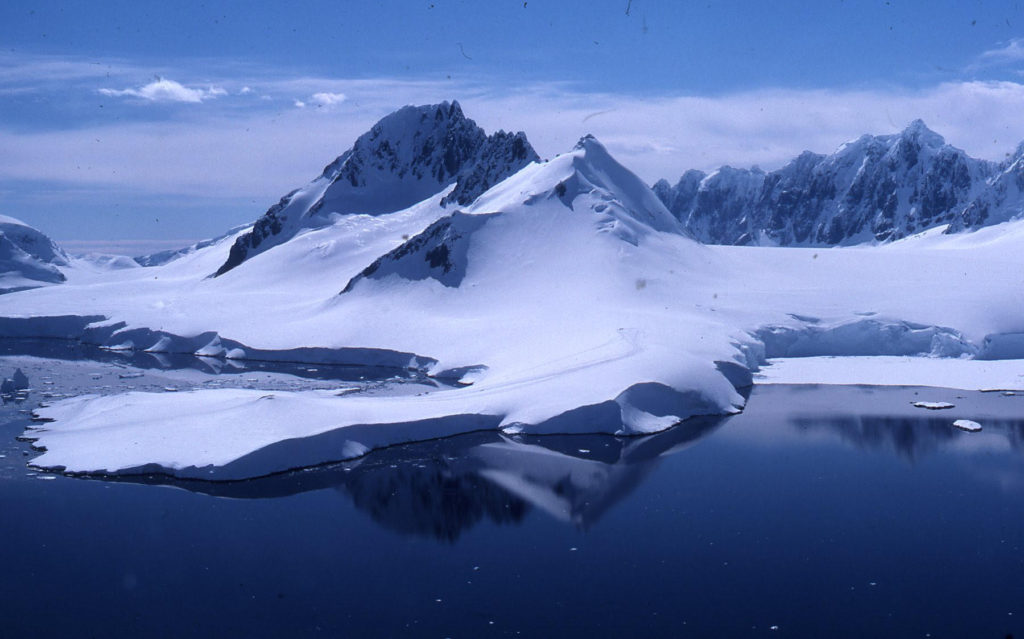
After the arrival at Adelaide of Colin Horton and Andy Turner from Damoy, they spent a few days each at Rothera in company with several of the other Adelaide base personnel who had manned Rothera for met. purposes throughout the Damoy airlift to provide an alternate landing.
5’ thick fast ice was in place at Rothera during this time, and heavy snow cover which precluded any survey work to establish whether the planned buildings would ‘fit’ in their assigned areas; and the Bransfield was unable to land their cargo as planned. Andy Turner and Colin Horton, destined to winter at Rothera as the first builders, returned Adelaide to work on base maintenance jobs, and also constructing a pontoon designed to be anchored in the south bay at Rothera, to get the work point into deeper water for the scows. The 12-drum pontoon was being stored on the Adelaide jetty pending transit to the Bransfield, and was washed off the jetty by heavy seas, so it was decided to dismantle it and fly it to Rothera to avoid damage. Loss or damage would have been a major setback to relief at Rothera.
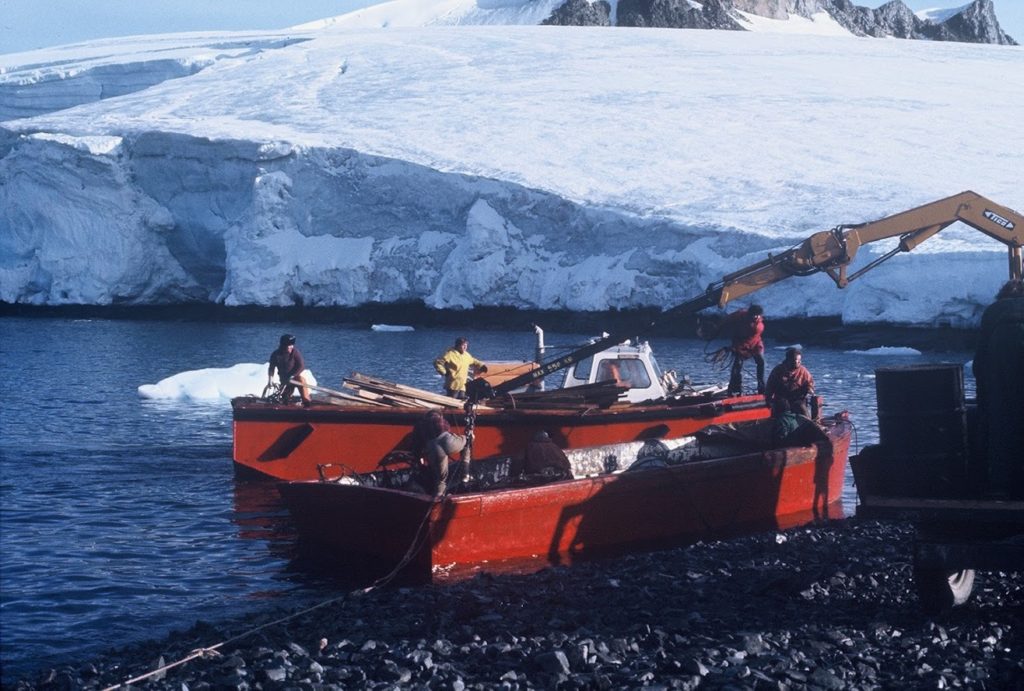
Andy Turner and Colin Horton were flown to Rothera in mid-January, together with Dr. Tony Lipscomb and Barry Peters from H.Q. The aim was to establish moorings for the relief vessels, by excavating by Copco to the permafrost, inserting steel pickets, then concreting the entire bundle together with a steel hoop. These were used throughout relief and showed no signs of moving. Other moorings were established on the North Bay beach, but were not used due to a lack of soundings in that bay.
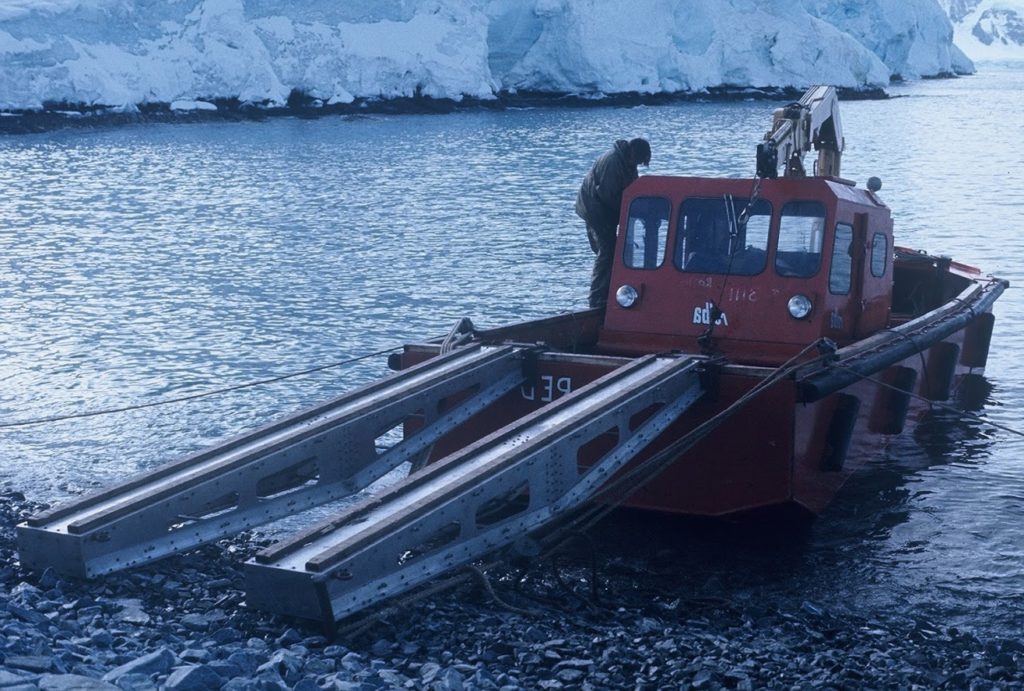

Fuel was flown into Rothera strip from Adelaide throughout October and November; Adelaide skiway degenerated into a terrible state, with knee deep running water some days, and cracks and crevasses along half the length of the strip. The aim was to get as much fuel out of Adelaide as possible to enable field support flights to operate out of Rothera.
After January, all flights flew out of Adelaide “light” (minimum fuel load) and then fuelled at Rothera; and at the end of the season, the ferry flights back to Punta Arenas were also fuelled at Rothera.

Summer 1975/76 and the First Winter – Alec Hurley
‘John Biscoe’ embarked Adelaide Fids on the 27th January to assist in the Rothera cargo discharge, which started on the 28th and was completed in four days under ideal conditions; vehicles (Sno-cat, Muskeg and International Harvester), general cargo via the pontoon dock, and drums (Avtur, petrol, paraffin) via the Tico crane on the ‘Keg on the beach.
Summer 1975-1976 (Photo Gallery by Alec Hurley – Tap or click to enlarge)
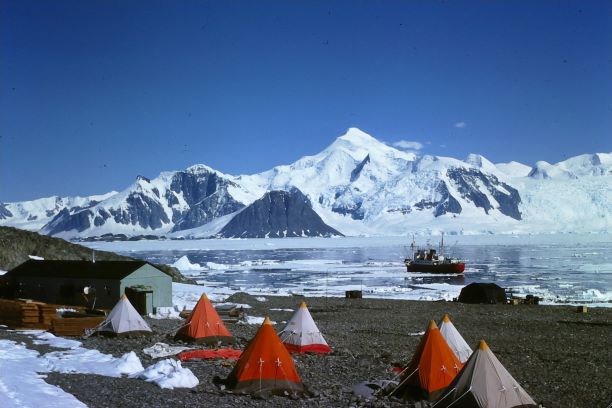

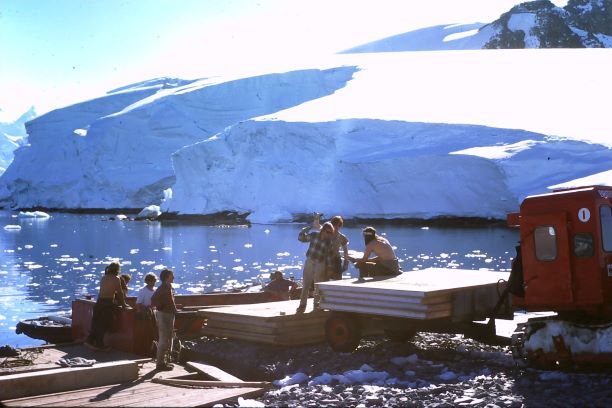
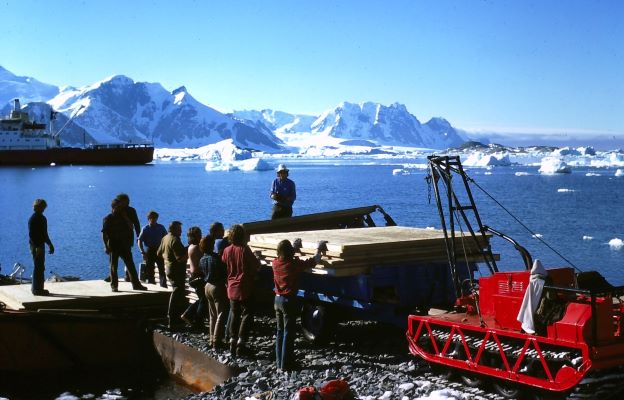
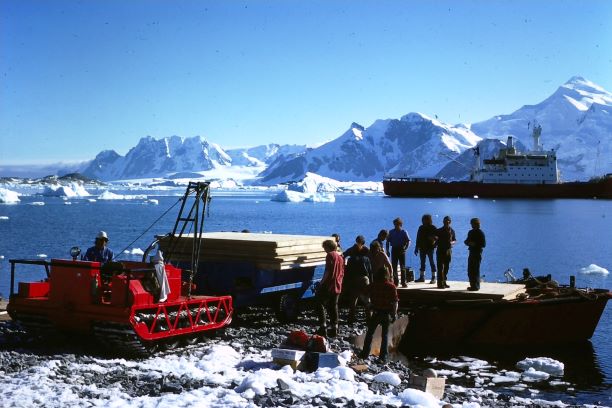

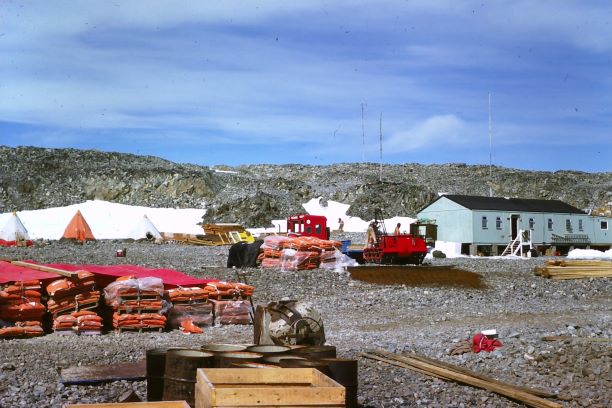

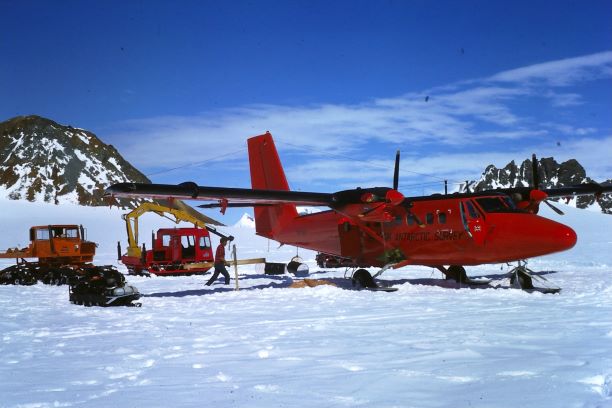
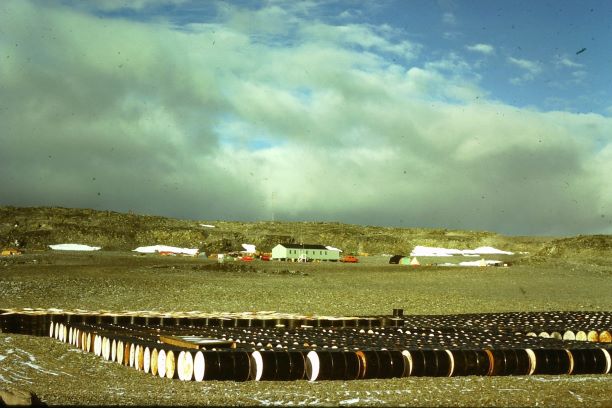
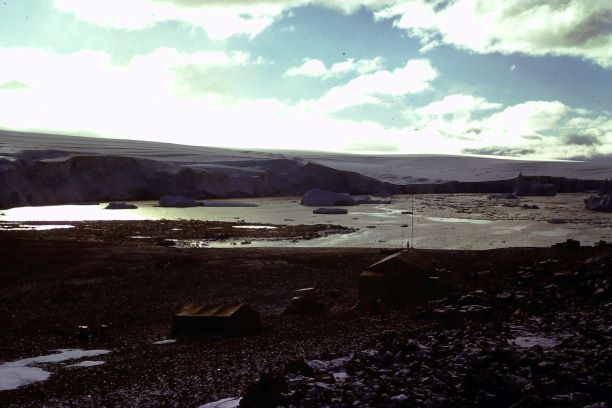

H.M.S. Endurance carried out sounding work in the South Bay and approaches, and offloaded charts to Base at the conclusion of their time, for use by ‘Bransfield’ later in the season.
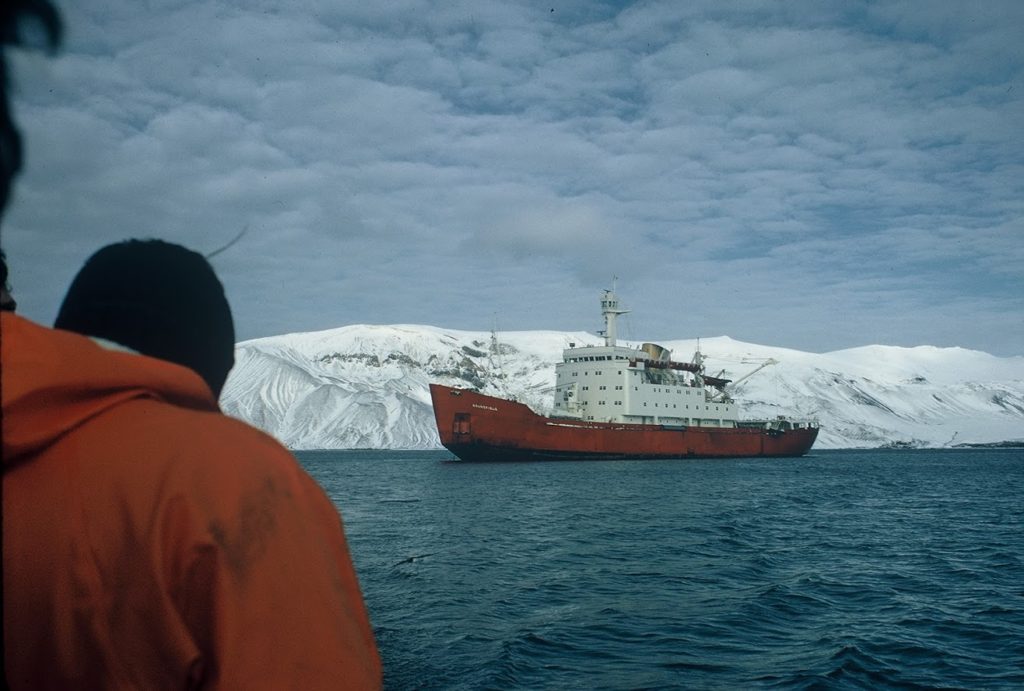
As field parties returned, anybody with “any particular usefulness” was shipped to Rothera. Survey work continued on the Point , and when John Biscoe was able to ship and discharge the Adelaide dinghies, work progressed steadily on creating a chart of the inshore approaches using an Echo Sounder “borrowed” from Endurance.
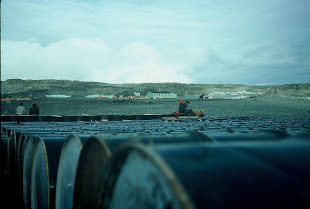
A ten-man team was flown from Adelaide for the day, to add to those already at Rothera, to enable erection of the hut in one day to avoid any wind damage, so ensuring that the four-man wintering party (Andy Turner and Colin Horton, Builders; Alex Hurley, Vehicle Mech; and Brian Sheldon, BC), had somewhere to live!
At the end of the season, landings were made from Bransfield around Doumer Island, and a preferable skiway, 1,000 yards long, was recced, together with improved cargo landing capability from the ships for use with skidoos. Two other alternative landing points were agreed at Curie Point and LeFevre Point, both much further distant from the airstrip, in case ice prevented landing at Py Point.
Winter 1976 – Alec Hurley
The first accommodation hut was erected on 1 Feb 1976 and a 4 man team wintered to complete living accommodation and delivery aviation fuel to the new ski-way ready for the following field season. Phase II was built in 1976/77. This included the main accommodation block, power house and tractor shed. This is a story in pictures showing some of the milestones and events during the year.
